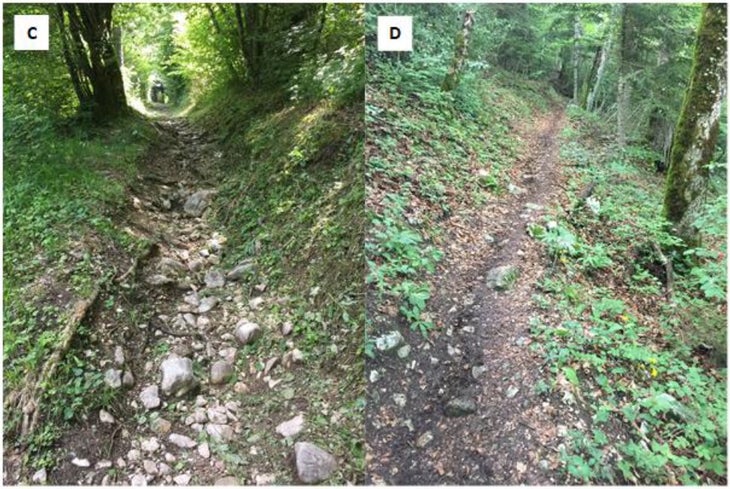Here’s How Much Extra Energy a Gnarly Trail Burns
“],”renderIntial”:true,”wordCount”:350″>
Here’s a new phrase for the trail jogging earth: technicity. In a latest review on uphill trail jogging, the term floor technicity refers to roots and rocks, sand and mud, slipperiness, unevenness, and all the other properties that distinguish an exciting path from a plain aged street or keep track of. It’s borrowed from the French phrase technicité, meaning “technical good quality or character,” and was to start with utilized in English in a 1933 newspaper report paraphrasing a dispute between two French socialist politicians. It’s a little bit awkward, but I can not consider of any much better alternatives. Technicality, for illustration, has a bunch of other connotations (like “loophole” or “meaningless detail”).
So, with the terminology settled, how does the technicity of a trail have an effect on the way you run up it? That’s what François Nicot of the Université Savoie Mont Blanc and his colleagues at a number of other universities in France set out to establish, publishing their benefits in the European Journal of Sport Science. They had 10 volunteers run up two trails, just one with minimal technicity and the other with higher technicity. Then they replicated those runs on a treadmill, matching the slope, length, and speed in one hundred-meter (328-foot) increments, in buy to determine out how their strides adjusted and how much more strength the complex trails burned.
Both trails have been on the eastern side of Montagne-du-Chat, in the Savoie area of France. Every segment was about 1,000 meters lengthy (a tiny far more than fifty percent a mile), with comparatively continual slopes to avoid unexpected jumps in effort and hard work, and took about 10 minutes to finish. The minimal technicity trail climbed one hundred ninety meters (623 toes), and the higher technicity trail climbed 200 meters (656 toes). In circumstance your instinct for what constitutes minimal and higher technicity is a tiny rusty, listed here are images of the two (with higher technicity on the left):

So what is the variation between jogging on smooth vs . complex terrain? In conditions of biomechanics, the major just one is the sum of side-to-side movement. The magnitude and variability of side-to-side foot accelerations far more than doubled on the trails as opposed to the treadmill, with very similar increases for the two trails. Cadence (the variety of actions for each moment) was a lot less impacted. On the minimal technicity trail, there was no sizeable variation as opposed to the treadmill. On the higher technicity trail, cadence was four.six % decreased, presumably due to the fact the runners have been from time to time stretching out their stride to get around a root or rock.
The runners wore a heart-fee keep an eye on, a GPS watch, and a respiratory mask related to a metabolic analyzer to measure their strength expenditure. Not incredibly, oxygen consumption (a proxy for strength) was bigger on the trails than on the treadmill. But there was not a sizeable variation between the two technicities: the effortless trail burned ten.four % far more strength than its treadmill analog, even though the challenging trail burned 11.four % far more. The heart fee values followed a very similar sample.
In contrast (and incredibly), there was no obvious variation between treadmill and trails for perceived effort and hard work. There are a couple reasons that the treadmill runs may well have felt just as challenging even nevertheless the physiological measurements suggested they have been simpler. One particular is that treadmill jogging lacks the cooling airflow of overground jogging. But a more simple just one, the scientists position out, is that most people today uncover jogging on a mountain trail pretty pleasant as opposed to slogging absent on a treadmill in a lab. That enjoyment variation could have bled into the subjective rankings of effort and hard work.
In the long run, the summary that complex trail jogging is more durable than smooth-surface jogging will not shock anybody. Previous investigation had believed that jogging on degree floor around simulated uneven terrain on a treadmill burned about five % far more strength than smooth terrain. The new investigation implies 10 % on uphill trails—but the variation could have far more to do with the outdoor location, which permits rougher terrain and far more side-to-side movement than a treadmill, than with the uphill slope. These quantities get started to give us a perception of just how much slower we should really hope to run on tough trails—and they hint at the prospect of a brave new earth, many research into the foreseeable future, in which well known routes and trail races integrate a new phrase into their vocabulary and publicize their scientifically validated technicity ranking.
For far more Sweat Science, join me on Twitter and Facebook, indicator up for the e-mail publication, and look at out my ebook Endure: Mind, Overall body, and the Curiously Elastic Limitations of Human General performance.
